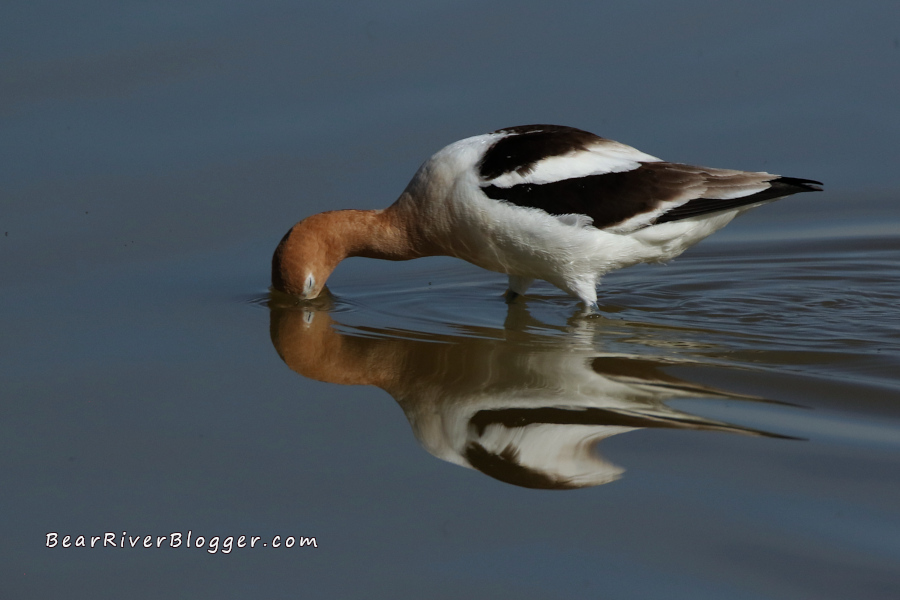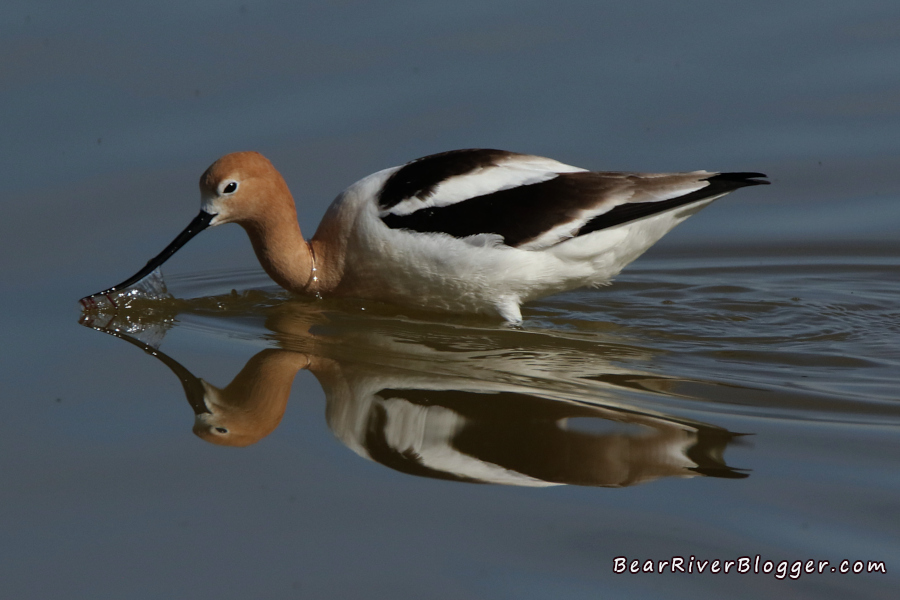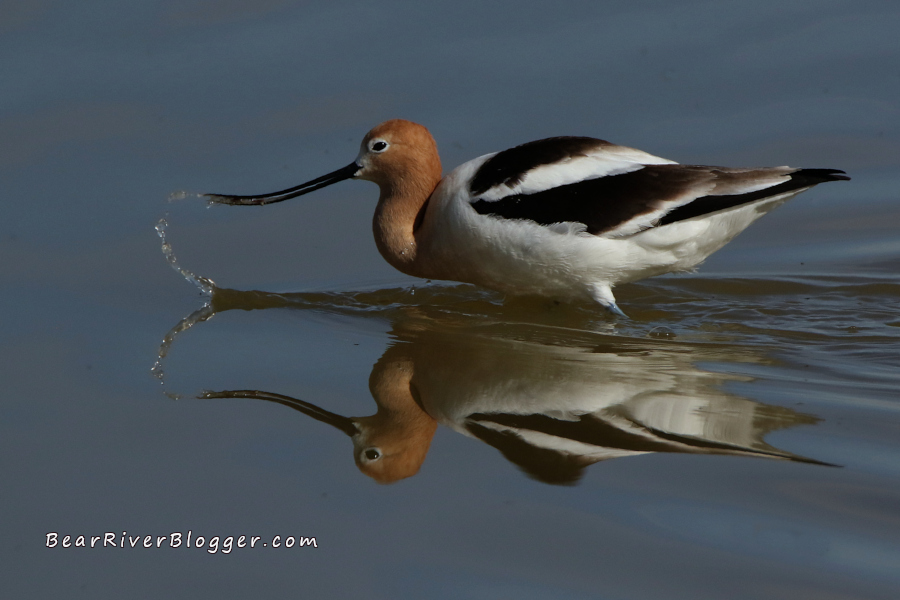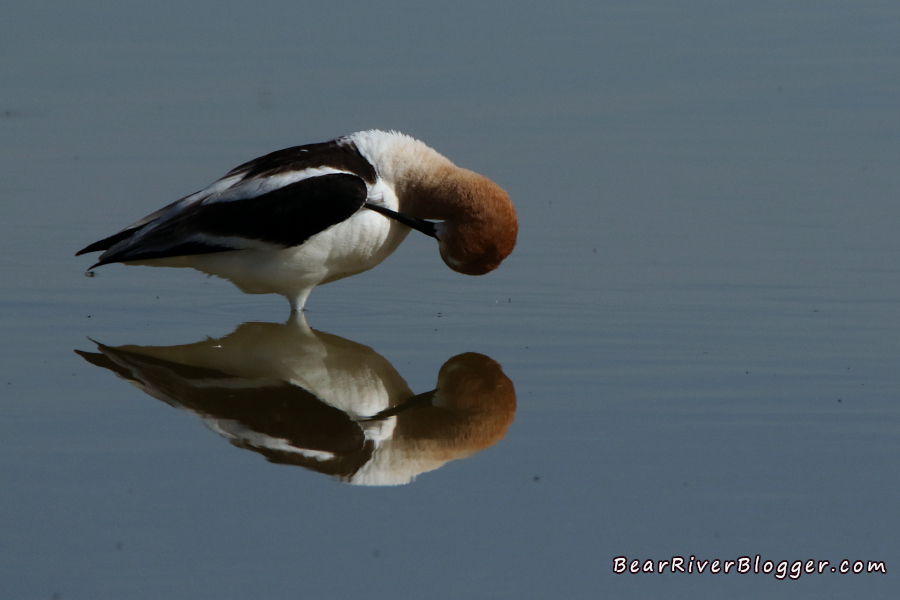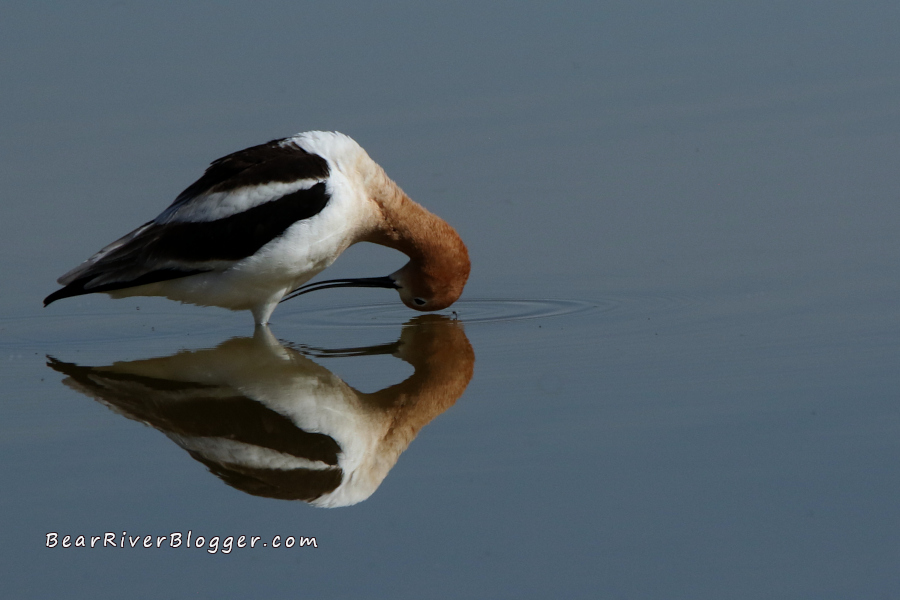When it comes to birdwatching, as many of us do, I definitely have a unique place in my heart for the American avocet.
Hopefully, my love for this unique shorebird is easily discerned by the short photo gallery below from a recent trip to the Bear River Bird Refuge.
This fondness stems from my interest in bird photography growing exponentially, literally overnight mind you, after enjoying a warm summer’s day many years ago parked along the east leg of Bear River Migratory Bird Refuge auto tour route next to a shallow, seasonal wetland I have since then and forever termed as “avocet pond”.
I spent most of that afternoon photographing two adult American avocets as they squabbled and quarreled over their small patch of marsh territory with another nearby nesting pair, a common behavior among avocets during the breeding season.
It was my first serious attempt at photographing birds and what better subject could I have found and started with that day than the quirky but very photogenic American avocet during the summer nesting season.
During the breeding season, American avocets are hard to miss on the refuge auto loop with their long, curved beaks, and their strikingly beautiful breeding plumage, consisting of a tan or cream-colored head and neck, a white body, and black and white wings.
American avocets molt this most colorful head and neck plumage twice each year, initially when summer comes to a close as they put on a more drab greyish non-breeding plumage for the winter season and once again during winter as their colorful tan breeding plumage returns before spring migration beckons and pushes these unique shorebirds back to their summer breeding grounds.
In fact, it’s only late March, and American avocets, adorned in their stunning tan breeding plumage, are once again back on the Bear River Migratory Bird Refuge wetlands for, yet again, another nesting season as I have consistently been seeing avocets on the bird refuge for a couple of weeks now.
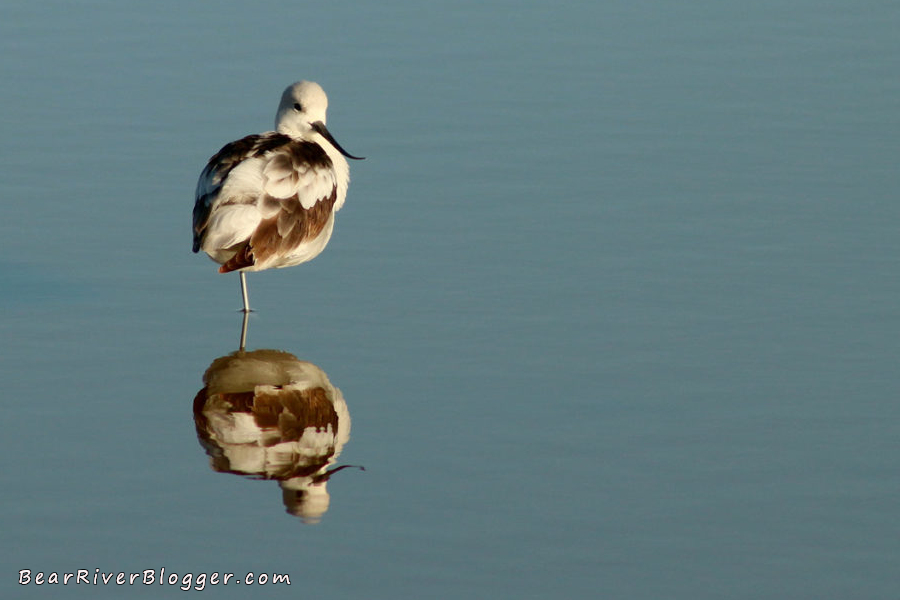
Typically, I start seeing American avocets on the Bear River Migratory Bird Refuge in late April but this year has been anything but typical with regards to birdwatching and photography, including me photographing 50 avocets on the refuge the day after Christmas and surprisingly watching a flock of 100 avocets land in a shallow pond on Farmington Bay in late February.
American avocets return to and are commonly found on the Bear River Migratory Bird Refuge as well as all the Great Salt Lake wetlands to nest each summer, making both the shallow wetlands of Farmington Bay and the Bear River Migratory Bird Refuge good places to view and photograph these unique shorebirds in their summer breeding plumage.
In fact, in normal water years, the best place I have found to watch and photograph American avocets is on the east leg of the Bear River Migratory Bird Refuge auto tour route where the short grasses are flooded making their preferred shallow, open ponds quite visible from the nearby gravel road.
It is interesting to note that American avocets are shorebirds that don’t mate for life but stay with their chosen mate for just one season, leaving each other after their breeding efforts are over and having to find a new mate once they return the next summer.
During fall migration, thousands of American avocets stage in large flocks on the shallow waters of the Great Salt Lake as they heavily feed in preparation for their migration to the coastlines of Mexico, California, and the Gulf states where they spend the winter season.
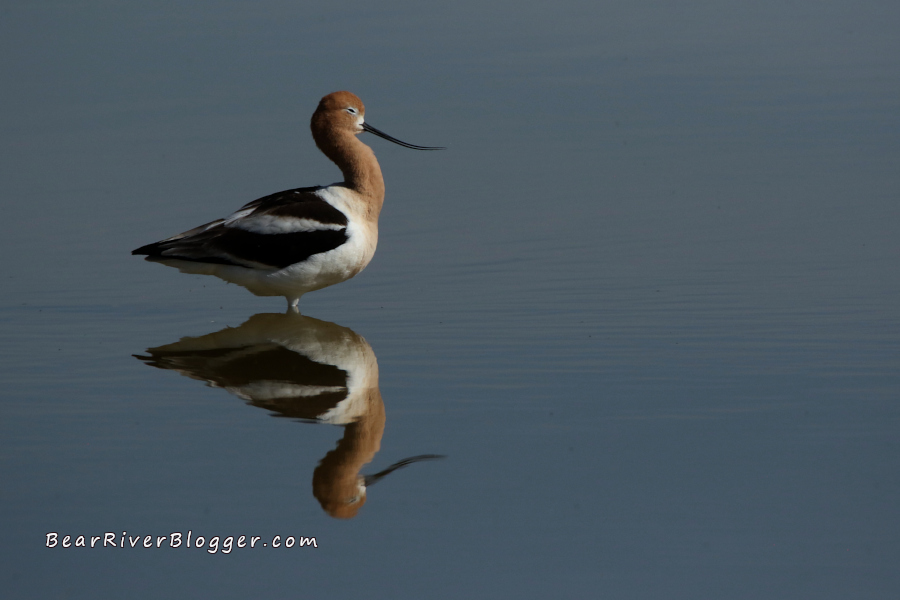
Along with several other species of shorebirds, the Antelope Island Causeway is one of the best places to see very large flocks of American avocets during fall migration, with thousands of birds congregating and feeding along the roadway in the shallow waters in late August and early September.
Even though the official start of spring has only a week or so under its belt so far, birds like the American avocet are already migrating back to the Great Salt Lake and Bear River Migratory Bird Refuge wetlands, making for a most enjoyable spring and summer of birdwatching and photography.
If you are like me, an avid birdwatcher and nature photographer, I offer you to head on over to our subscribe page and sign up for email notifications for future blog posts about our birdwatching and nature photography excursions.
For those of you who use social media, I have also started a Bear River Blogger Facebook page you can follow where I post small and more frequent updates, photos, and other things of interest about the famous Bear River Migratory Bird Refuge and other natural places I photograph and write about here on this website.
American Avocet Photo Gallery
(American Avocets Preening. For short nature photography tips and interesting stories about the natural world around us, subscribe to our Bear River Blogger channel on YouTube for videos and updates from our travels while out in nature, both on and off of the famed Bear River Migratory Bird Refuge.)

